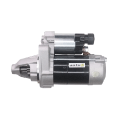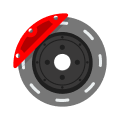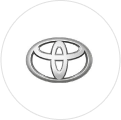Brakes and Rotors: A Comprehensive Guide to Maintenance, Signs of Replacement, Pricing, and Common Causes of Problems
The proper functioning of brakes and rotors is crucial for road safety in any vehicle. This comprehensive guide delves into their significance, warning signs for replacements, pricing considerations, and the usual culprits behind brake pad and rotor issues.
Importance of Brakes and Rotors
Ensuring safe braking relies heavily on the integration of brake pads and rotors, which transform pedal pressure into effective stopping power. Overlooking maintenance can jeopardize safety and diminish performance while driving. Regularly inspecting and promptly replacing these components are essential steps in maintaining optimal braking functionality.
Brake pads function by generating friction against the rotors, which results in the vehicle slowing down or coming to a stop upon brake pedal application. Conversely, rotors are discs connected to the wheels, rotating in tandem with them. These elements collaborate to convert kinetic energy into thermal energy via friction, ultimately bringing the vehicle to a stop. It's crucial to keep these components in excellent condition to guarantee efficient braking performance and safe driving encounters.
Neglecting Maintenance Risks
Inadequate maintenance of brake pads and rotors can pose numerous safety hazards and performance challenges. When brake pads wear out, they can significantly diminish braking effectiveness, lengthen stopping distances, and in severe instances, result in brake failure. Similarly, rotors that are damaged or warped may induce vibrations, pulsations, or uneven braking, compromising the stability and efficiency of the entire braking system. Conducting routine inspections and promptly replacing these parts are crucial preventive actions to minimize these potential risks and uphold optimal braking performance and safety standards.
Regular Inspection and Timely Replacement
Through regular inspections of brake pads and rotors, motorists can detect early signs of wear or damage. Common warning signals such as grinding noises, vibrations, pulling to one side, squealing sounds, or visible damage should alert drivers to take immediate action and consider replacement if necessary. Timely addressing of these issues by replacing worn or damaged components ensures optimal functionality of the braking system, thereby improving road safety for both the driver and other road users.
To summarize, emphasizing the upkeep of brake pads and rotors is crucial for practicing safe driving habits. Consistent inspections, swift recognition of warning signals, and timely replacement of deteriorated parts are fundamental tactics for maintaining peak braking performance and guaranteeing a high standard of safety on the road. By proactively maintaining these essential components, drivers can have confidence in the optimal operation of their vehicle's braking system.
Signs that Brakes and Rotors Need Replacement
Recognizing when brakes and rotors require replacement is essential for ensuring optimal performance and safety. Common signs include:
Grinding noise when braking: Grinding noises often suggest that the brake pads are completely worn down, leading to metal-on-metal contact with the rotors.
Vibration or pulsing while braking: Uneven braking or a pulsating sensation in the brake pedal could indicate warped rotors.
Pulling to one side when braking: If the vehicle pulls to one side when braking, it could indicate uneven brake pad wear or rotor issues.
Squealing noise during braking: High-pitched sounds when applying the brakes can indicate worn-out brake pads.
Visible damage on rotors: Check the brake pads for thickness; if they appear thin or worn, they likely need replacement. Also, inspect the rotors for scoring, grooves, or other signs of damage.
Excessive rust on rotors: Excessive rust on rotors can significantly impact the performance and safety of a vehicle's braking system, necessitating their replacement.
Dashboard Warning Lights: Some cars are equipped with dashboard warning lights that illuminate to indicate brake system problems, such as low brake fluid levels or worn brake pads.
Burning Smell: A burning odor while driving or applying the brakes may suggest overheated or dragging brake components, necessitating prompt attention.
Maintenance and Lifespan
Having a qualified mechanic conduct regular inspections is essential for evaluating the wear and tear on brake pads and rotors. Typically, these components last between 20,000 to 75,000 miles, depending on how the vehicle is driven and used. It's important to replace them promptly when signs of wear or damage are noticed to maintain optimal braking performance.
Pricing Factors for Replacement
The expenses associated with replacing brake pads and rotors can fluctuate due to numerous elements, including:
- The make and model of the vehicle
- The quality of parts utilized
- Labor expenses
- The type of vehicle
Estimations for a comprehensive brake job, which includes replacing both pads and rotors, typically span from $400 to $900 per axle. Independent mechanics or mobile mechanics frequently present more budget-friendly options in contrast to dealerships. Having a grasp of these pricing determinants empowers vehicle owners to handle costs efficiently while emphasizing safety as a top priority.
Conclusion
Maintaining the integrity of brakes and rotors is paramount for safe driving practices. Recognizing the warning signs that signal the need for replacement, comprehending the maintenance protocols, and having a clear understanding of the pricing dynamics are fundamental aspects in guaranteeing peak performance while keeping safety at the forefront of every journey. It's crucial to stay informed and proactive in vehicle maintenance to uphold a secure driving experience.
How Instant Car Fix can help
Instant Car Fix is your reliable partner in maintaining the health of your vehicle's braking system. Our expert mechanics are equipped with the knowledge and experience to diagnose issues accurately, recommend appropriate maintenance or replacement procedures, and provide transparent pricing based on industry standards. By choosing Instant Car Fix, you gain access to cost-effective solutions without compromising on quality, ensuring your vehicle's brakes and rotors operate optimally for a safer driving experience. Stay informed, stay safe with Instant Car Fix!
Verified
Verified
Verified
Verified
Verified































